Teochew cuisine, originating from the Chaoshan region of Guangdong province in China, is a culinary tradition celebrated for its fresh flavors, meticulous preparation, and emphasis on natural ingredients. Characterized by its emphasis on seafood, light seasoning, and a harmonious balance of flavors, Teochew cuisine reflects the region's coastal heritage and agricultural abundance. Dishes like Teochew braised goose, fish balls, and oyster omelette showcase the ingenuity and creativity of Teochew chefs in transforming simple ingredients into delectable masterpieces. With its roots deeply embedded in tradition yet open to innovation, Teochew cuisine offers a delightful culinary journey through the rich tapestry of Chaoshan culture.
Jiaozi
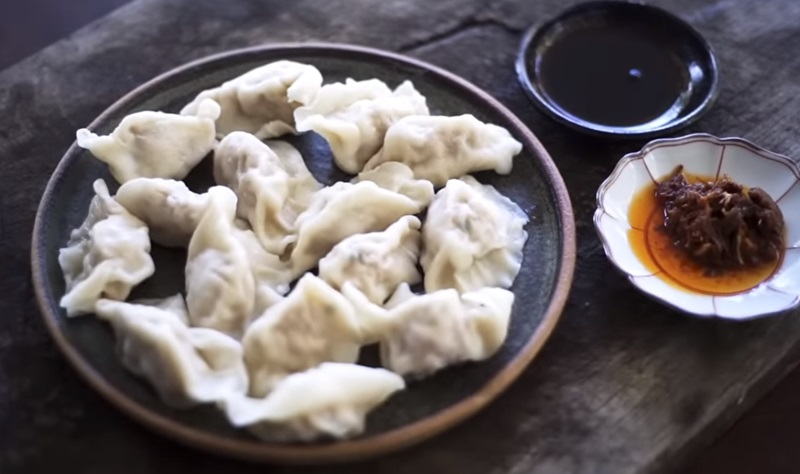
One of the most beloved dishes in Teochew cuisine is the Jiaozi, a type of dumpling that is characterized by its delicate and thin dumpling skin, which is made from a mixture of flour and water. The filling, on the other hand, can vary but commonly consists of minced pork, shrimp, and vegetables like chives or cabbage. The ingredients are finely chopped and seasoned with a combination of soy sauce, sesame oil, and other aromatic spices. The dumplings are traditionally shaped into a crescent moon, with pleats along the edges, giving them an elegant appearance. They are then boiled or steamed until the skin becomes translucent and the filling is cooked through. Teochew Jiaozi is often served with a dipping sauce made from soy sauce, vinegar, chili oil, and garlic.
Bak kut teh
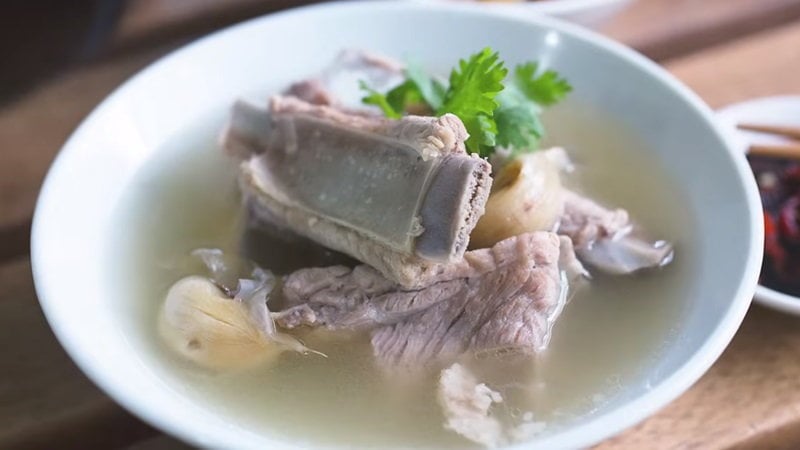
Bak kut teh translates to "meat bone tea," which refers to the flavorful pork ribs infused in a fragrant herbal broth. The star of this dish is the tender and succulent pork ribs, slow-cooked in a mix of aromatic herbs and spices such as garlic, star anise, cinnamon, cloves, and dried mushrooms. These ingredients create a rich and complex flavor profile that is both savory and herbal. The broth is the essence of bak kut teh, with its deep brown color and robust aroma. It is typically served in clay pots, allowing the heat to be retained and the flavors to intensify.
Fish Ball

The Fish Balls are made from fresh fish meat, usually from white fish like carp or snakehead, which is minced and mixed with cornstarch, salt, pepper, and sometimes other seasonings like sesame oil or fish sauce. The mixture is then shaped into small balls and boiled until cooked through. The fish balls are served in a clear broth made from fish bones and vegetables, which enhances the natural taste of the fish balls. The broth is light and flavorful, allowing the fish balls to be the star of the dish. In addition to the fish balls and broth, the dish is often accompanied by leafy greens like bok choy or watercress, adding a refreshing and nutritious element to the meal.
Shacha Sauce
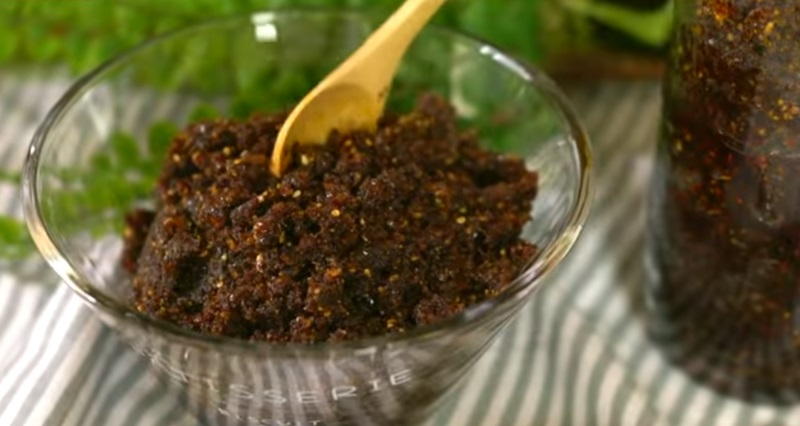
Teochew cuisine is known for its delicate flavors and emphasis on freshness. One popular dish that showcases this is the Shacha sauce dish. Shacha sauce is a unique and versatile condiment made from a blend of ingredients such as soybean oil, garlic, shallots, dried shrimp, and various spices. To create the Shacha sauce dish, the sauce is typically used as a base for stir-frying a variety of ingredients. Commonly included are fresh seafood like prawns, scallops, or squid, along with vegetables such as bok choy, mushrooms, and bell peppers. The sauce adds a rich umami flavor and a hint of spiciness to the dish.
Popiah
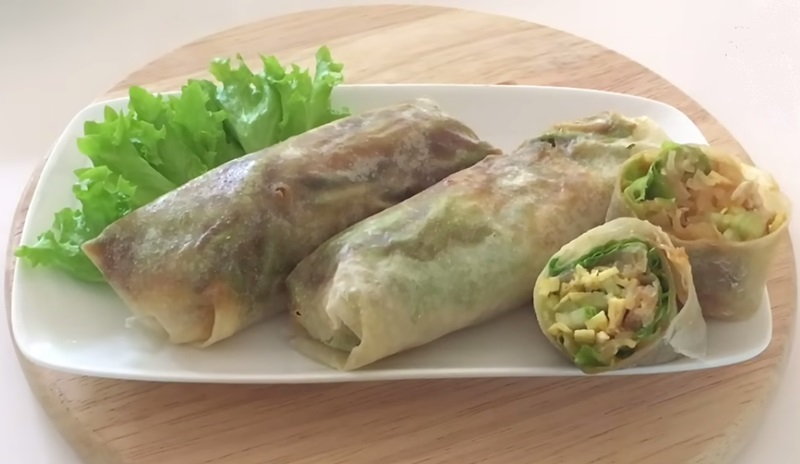
Popiah is a traditional Teochew spring roll, filled with a variety of ingredients and bursting with flavors. The dish starts with a soft and thin wheat flour wrapper, which is then filled with a mixture of julienned vegetables such as turnip, carrot, lettuce, and bean sprouts. The filling is flavored with a combination of soy sauce, hoisin sauce, and sesame oil, giving it a rich and savory taste. Some variations of Popiah also include ingredients like diced tofu, minced pork, and shrimp for added texture and flavor. The beauty of Popiah lies in its versatility. Each bite offers a delightful combination of crunchiness from the fresh vegetables and a burst of umami from the flavorful sauce. It is typically eaten with a sweet chili sauce or a tangy peanut sauce, which complements the dish perfectly.
Oyster Omelette
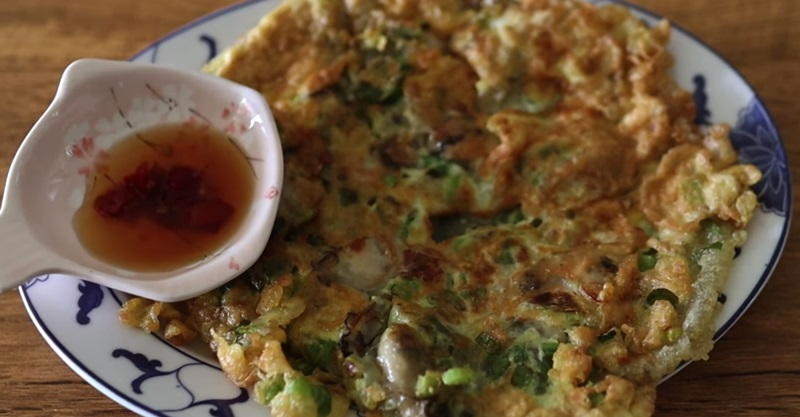
The oyster omelette, originating from Min Nan (Hokkien and Teochew), is well-known for its delicious taste. It is made by creating an omelette filled mainly with small Pacific oysters. Sweet potato starch is added to the egg batter, providing the omelette with a denser texture. In the cooking process, pork lard is commonly used for frying. Regional variations may include the addition of a savory sauce on top of the omelette to enhance its flavor.
Chai tow kway
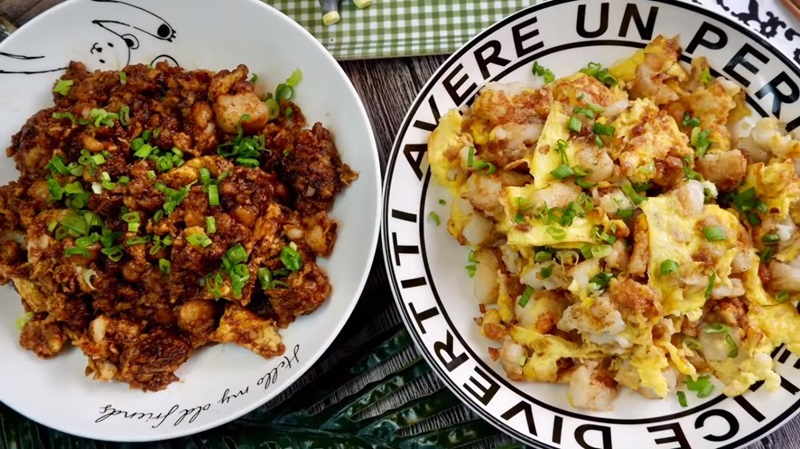
Chai tow kway, also known as fried carrot cake, is a popular dish in Teochew cuisine. Despite its name, it does not actually contain carrots. Instead, it is made from rice flour and white radish, which are grated and mixed together to form a soft batter. This batter is then steamed and left to cool before being cut into small cubes. To prepare chai tow kway, the cubes are stir-fried with various ingredients. Common additions include eggs, garlic, preserved radish, and sometimes, dried shrimp or Chinese sausage for added flavor. The dish is typically seasoned with soy sauce, salt, and pepper. The result is a flavorful and slightly crispy dish with a soft and chewy texture.
Mee Pok
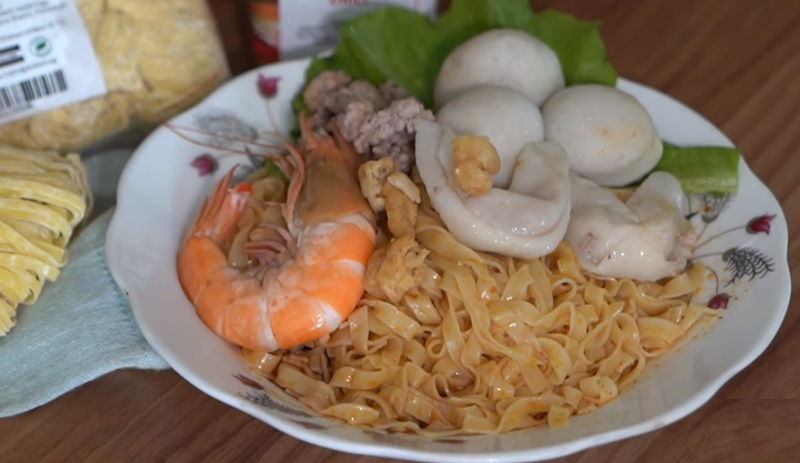
Mee Pok is a popular noodle dish of the Teochew cuisine. Mee pok is made from flat egg noodles, cooked al dente to maintain their chewy texture. The dish is typically served with a variety of toppings and a flavorful sauce. One of the key elements of a Mee pok dish is the sauce, which is a combination of soy sauce, oyster sauce, chili, vinegar, and other seasonings. This sauce is essential in bringing out the rich flavors of the dish. The toppings can vary, but commonly include minced pork, fish balls, fish cake, and mushrooms. Some variations also include prawns or sliced chicken. The dish is then garnished with chopped spring onions and crispy fried shallots, adding a burst of freshness and texture.
Kway Chap
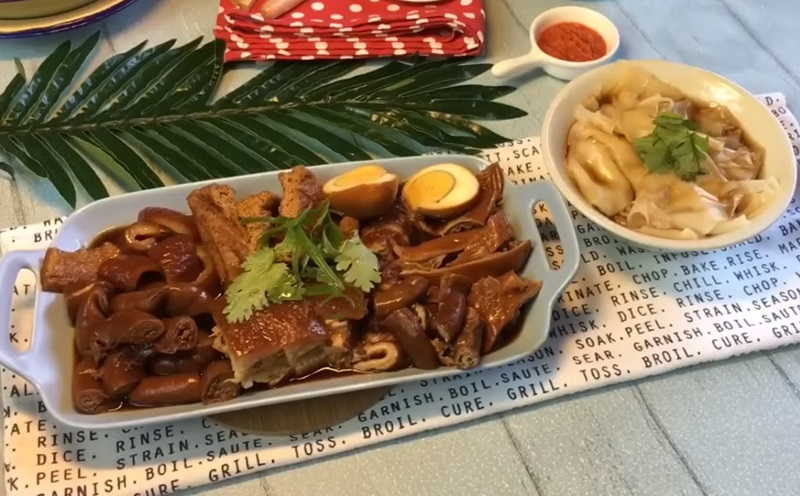
Kway Chap is a Teochew noodle soup that features wide rice sheets (kway) in a dark soy sauce-based broth. The dish includes a variety of pork cuts such as offal, pork belly, intestines, and pig's ears, along with braised duck meat, different types of beancurd, preserved salted vegetables, and braised hard-boiled eggs.
Fun Guo
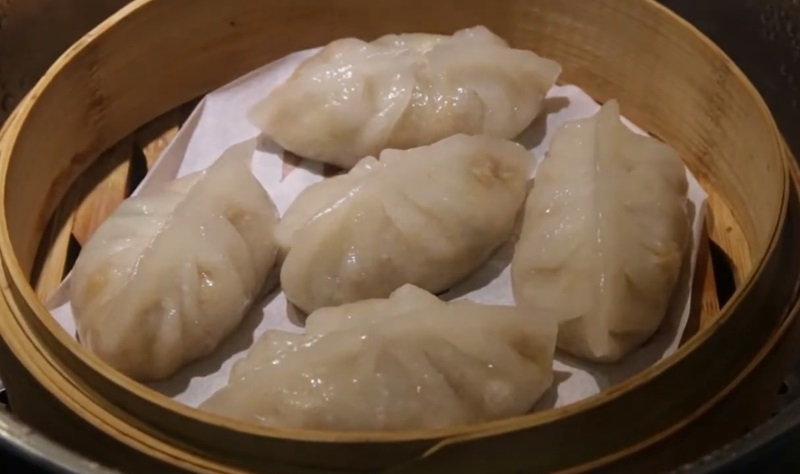
Fun Guo is a steamed dumpling made from a thin, translucent rice flour wrapper that is filled with a mixture of minced pork, shrimp, mushrooms, and jicama. The filling is seasoned with soy sauce, sesame oil, and other aromatic ingredients, giving it a savory and umami flavor. The dumplings are then steamed until the wrapper becomes tender and the filling is cooked through. What sets Fun Guo apart from other dumplings is its unique pleated shape. The edges of the wrapper are pinched together to form a beautiful flower-like pattern, making it visually appealing. Fun Guo is often enjoyed with a side of soy sauce or a spicy dipping sauce.
Chwee Kueh
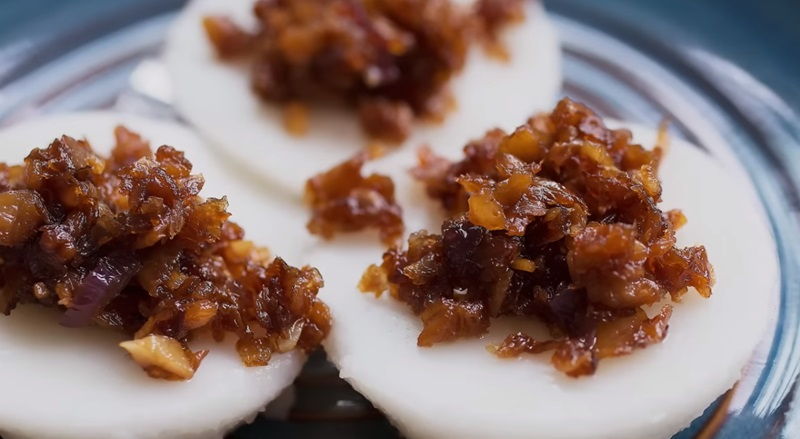
Chwee Kueh is a simple yet delicious snack. It consists of steamed rice cakes topped with a savory mixture of preserved radish, also known as chai poh, and served with a side of chili sauce. The rice cakes are made from a mixture of rice flour and water, steamed until they become soft and slightly chewy in texture. The preserved radish is stir-fried with garlic and other seasonings, creating a salty and umami-flavored topping that complements the mildness of the rice cakes. The dish is often garnished with spring onions and served in small saucers or bowls. Chwee kueh is loved for its simplicity and contrasting flavors. The softness of the rice cakes combined with the crunchiness of the preserved radish creates a delightful texture.
Beef Ball
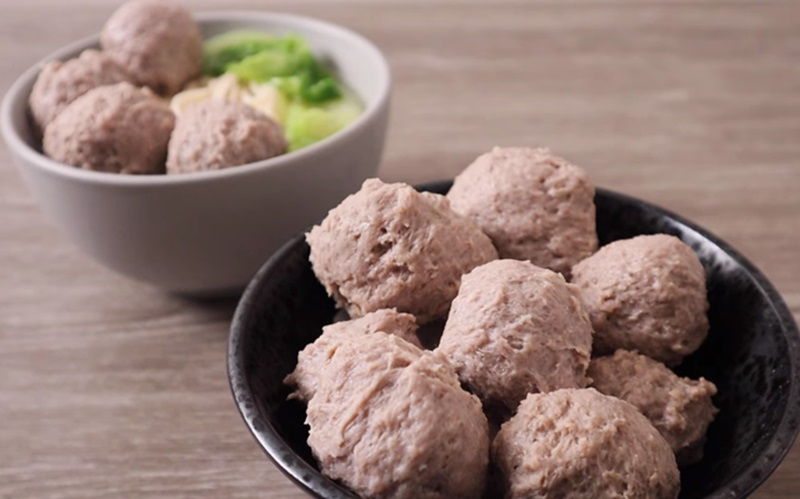
Beef Balls are made from minced beef and various seasonings. The meat is finely ground and mixed with ingredients such as garlic, spring onions, salt, and pepper to enhance its taste. The mixture is then shaped into small, bite-sized balls. The beef balls are typically cooked in a clear broth, which is made by simmering beef bones and vegetables for hours. This slow cooking process extracts the rich flavors from the bones and infuses the broth with a savory aroma. When serving, the beef balls are added to the hot broth, allowing them to cook and absorb the flavors of the broth. The dish is often garnished with fresh herbs, such as coriander or parsley, to add a burst of freshness and color.
Bánh Pía
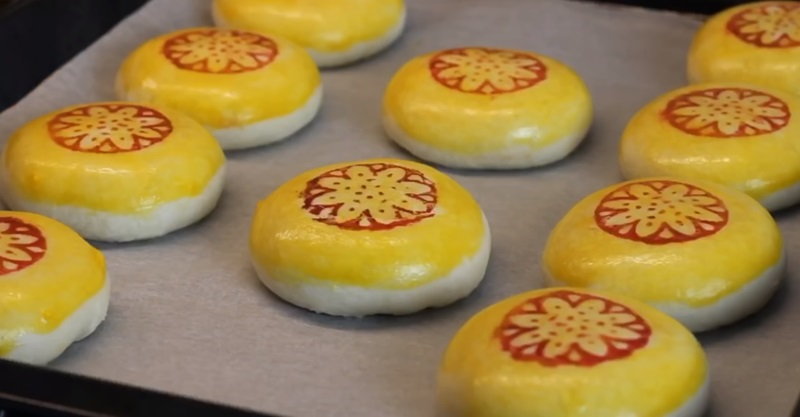
Bánh Pía is a traditional Teochew pastry that originated from the Chaoshan region in China and is now popular in various Southeast Asian countries. This delectable treat is known for its flaky and buttery crust, filled with a sweet and fragrant mung bean paste. The preparation of Bánh pía involves a meticulous process to ensure the perfect texture and taste. The pastry dough is made with flour, lard, and water, which is then carefully folded and rolled multiple times to create layers. The mung bean paste is made by boiling and mashing the beans with sugar, creating a smooth and creamy filling. Once the dough and filling are ready, small portions of the mung bean paste are wrapped in the pastry and shaped into round or rectangular shapes. These pastries are then baked until golden brown.
Teochew Porridge
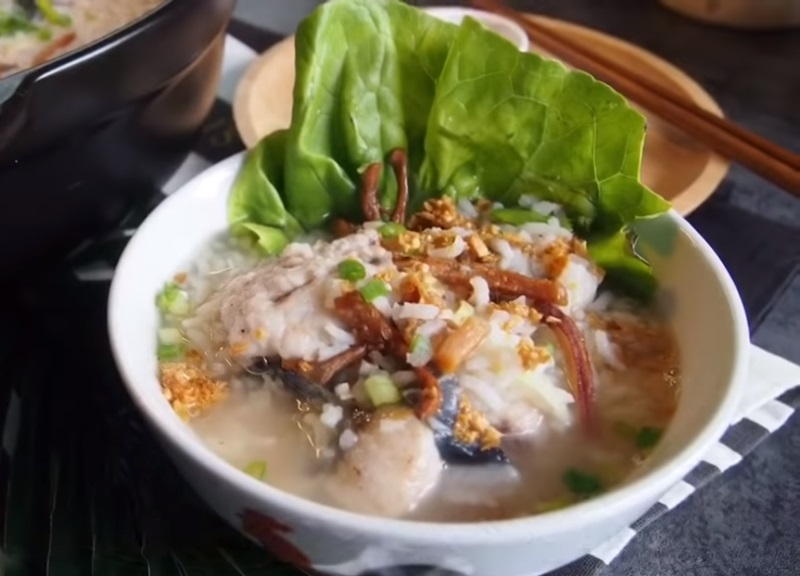
Teochew Porridge, also known as muay or bubur, is a comforting and versatile dish. It is made by boiling rice with a large amount of water until it becomes a thick and creamy consistency. The porridge is then served plain or with a variety of side dishes. The beauty of Teochew porridge lies in its accompaniments. Common side dishes include salted vegetables, steamed fish, braised duck, stir-fried vegetables, and preserved eggs. These dishes are often light and delicately flavored, complementing the mildness of the porridge.
Patriotic soup
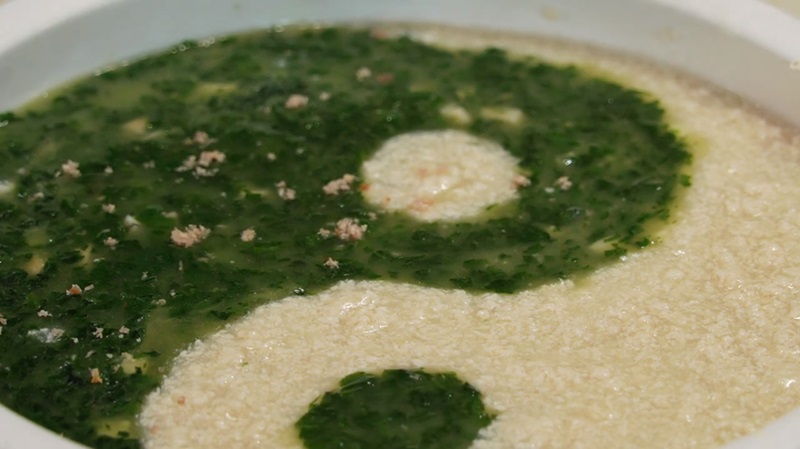
Patriotic soup is a vegetable soup with roots in Teochew cuisine. While the traditional recipe features sweet potato leaves, variations may include amaranth, spinach, ipomoea aquatica, and various leafy greens, along with alternative broths like beef or chicken. Additional ingredients like beaten eggs, shredded dry-cured ham, tofu, and cellophane noodles are often incorporated. However, the most authentic rendition of the soup is usually homemade, consisting simply of leafy vegetables, edible mushrooms, and vegetable broth.
Soon kueh

Soon Kueh is a traditional Teochew dumpling that is steamed and filled with a variety of ingredients. It is a perfect combination of soft and chewy rice flour skin and a savory filling. The filling of Soon kueh typically consists of jicama, bamboo shoots, dried shrimps, and mushrooms, mixed with a combination of soy sauce, sesame oil, and pepper. The filling is then wrapped in a translucent rice flour skin and steamed until it is cooked to perfection. The dumpling is usually served with a sweet and tangy chili sauce that complements the savory flavors. T
Red Peach Cake
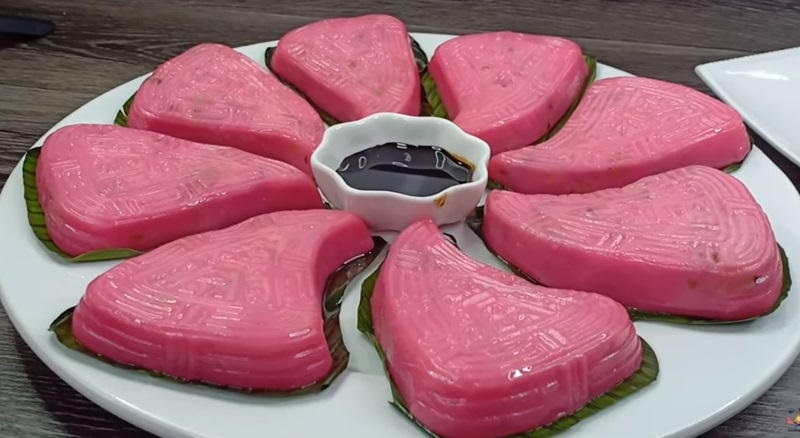
Red peach cake is a small, teardrop-shaped dumpling filled with a mixture of glutinous rice, peanuts, mushrooms, and shallots. Its soft and sticky skin is made from glutinous rice flour, often dyed pink, and molded using a wooden tool before being steamed. This delightful cake originates from the Chaoshan region.
Sichuan Pepper Chicken
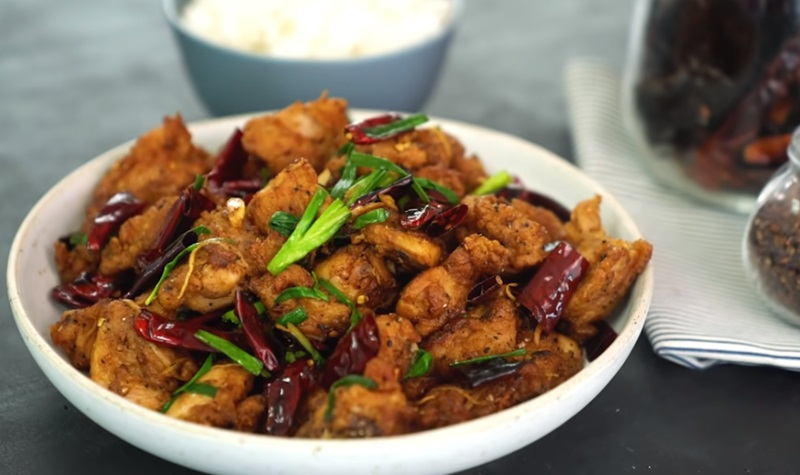
Sichuan Pepper Chicken combines the aromatic flavors of Teochew cuisine with the numbing and spicy elements of Sichuan cuisine. It is made by marinating tender chicken pieces with a mixture of soy sauce, sesame oil, garlic, and ginger. The marinated chicken is then stir-fried with an assortment of vegetables such as bell peppers, mushrooms, and onions. The key ingredient that sets this dish apart is the Sichuan pepper, which adds a distinct numbing sensation and a fragrant aroma to the dish. The combination of the tender chicken, crunchy vegetables, and the tingly sensation of the Sichuan pepper creates a harmonious balance of flavors and textures.
Crab Jujube
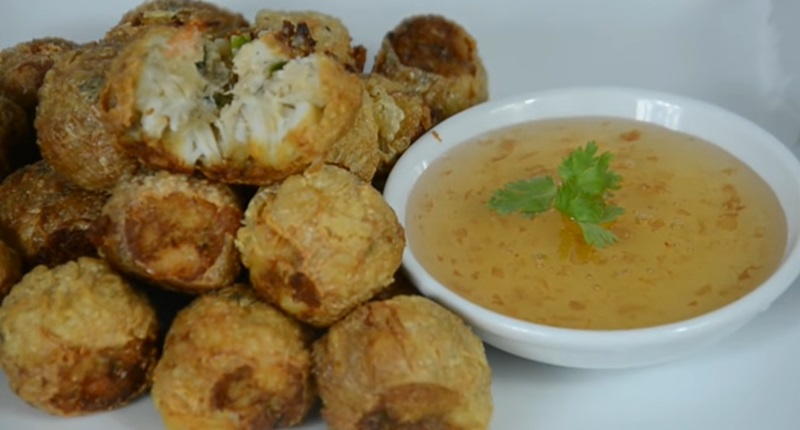
Crab Jujube is a Teochew dish, featuring small crab cakes that are deep-fried and shaped like jujube fruits. The key components include crab meat, pork fat or ground pork belly, chopped water chestnuts, eggs, vegetables, and herbs. These ingredients are enclosed in fresh tofu skin, creating long rolls that are then cut into bite-sized pieces and deep-fried.




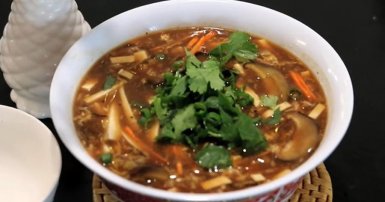
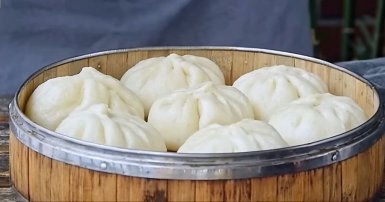
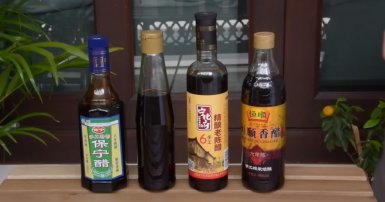
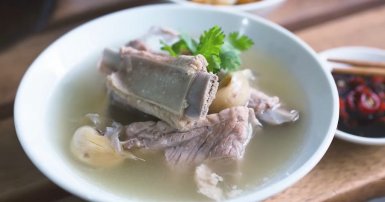
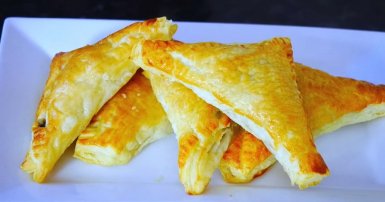

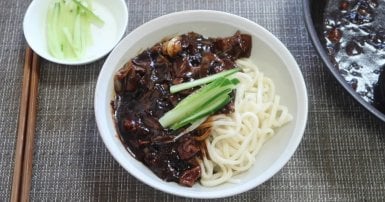
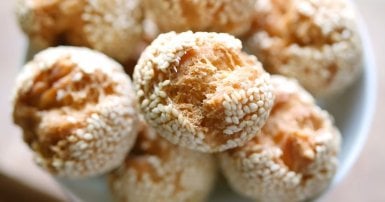

-1709813013.jpg)


